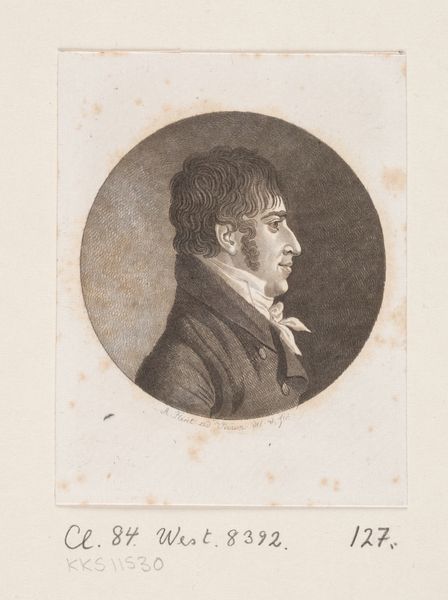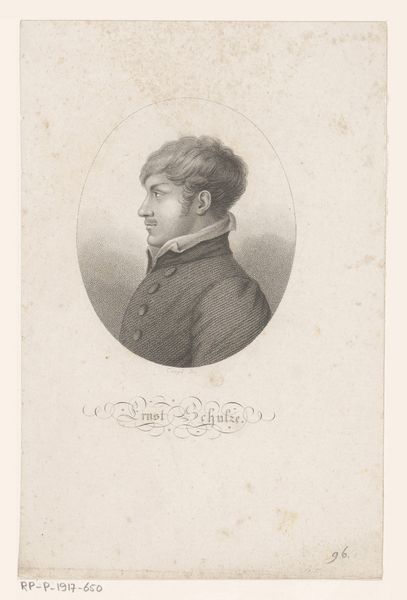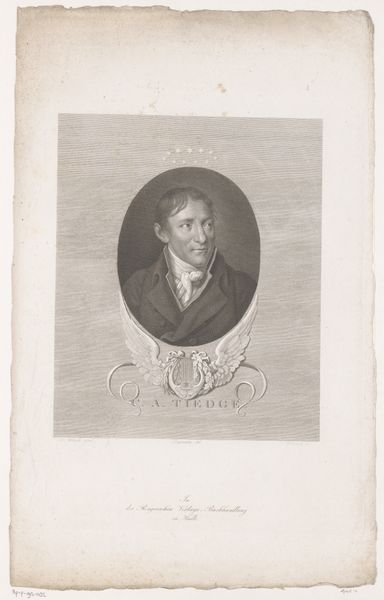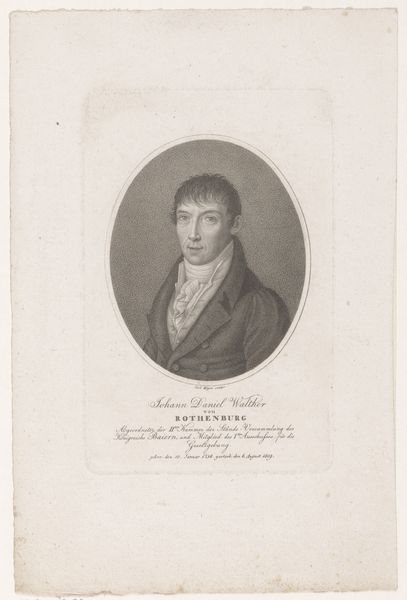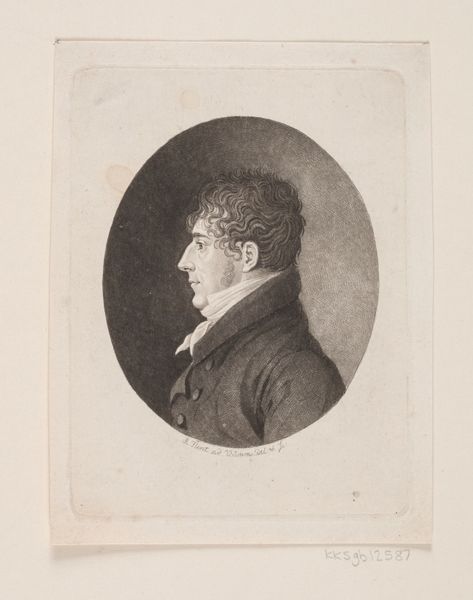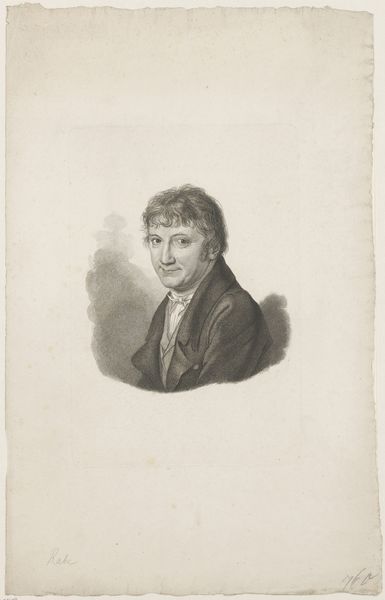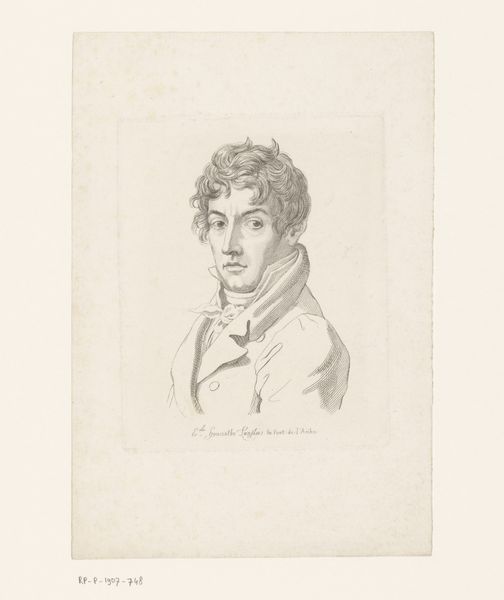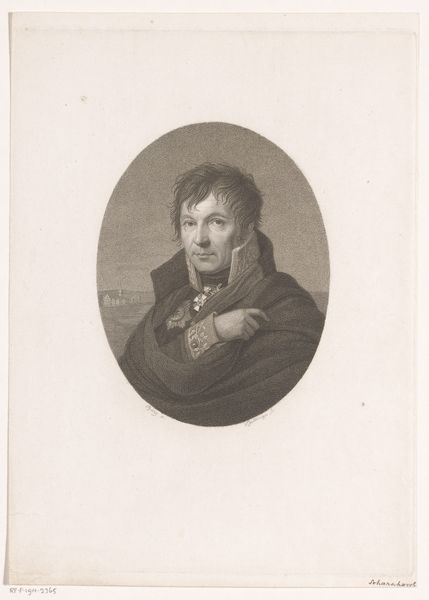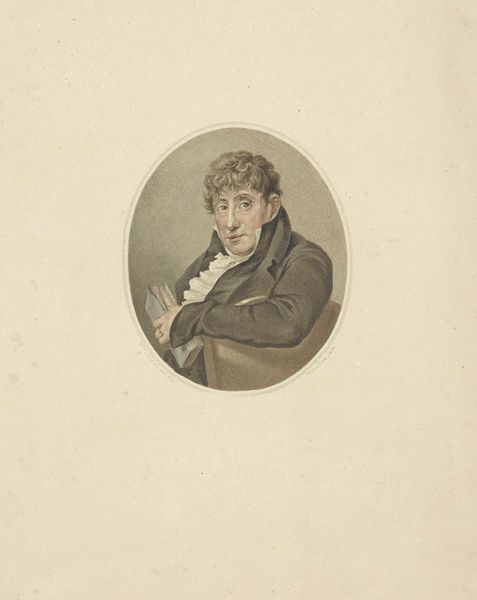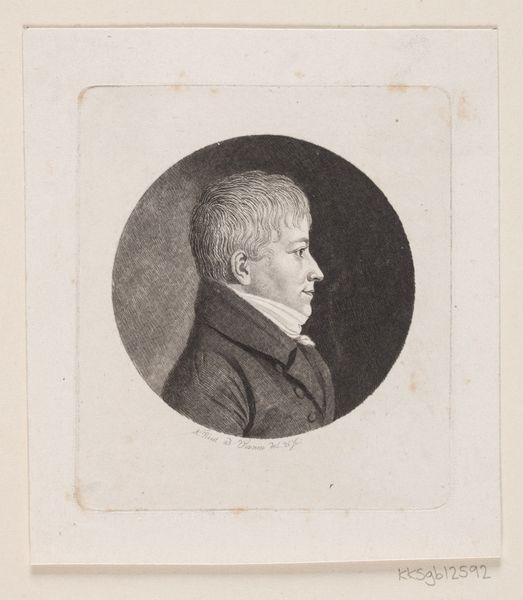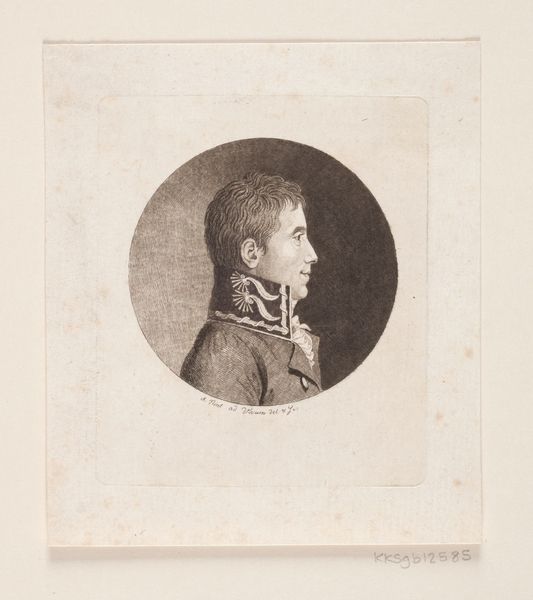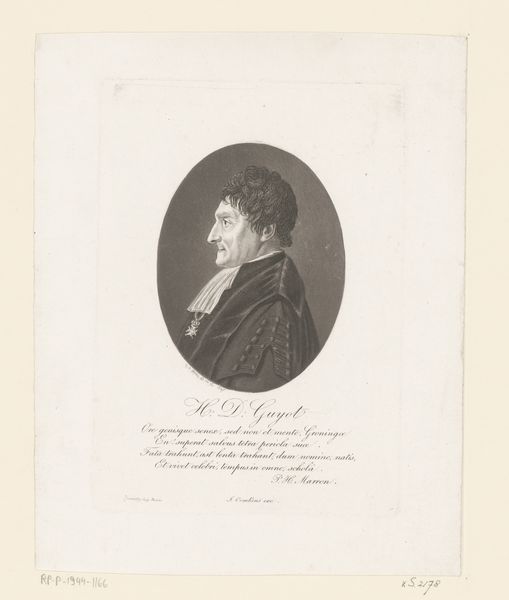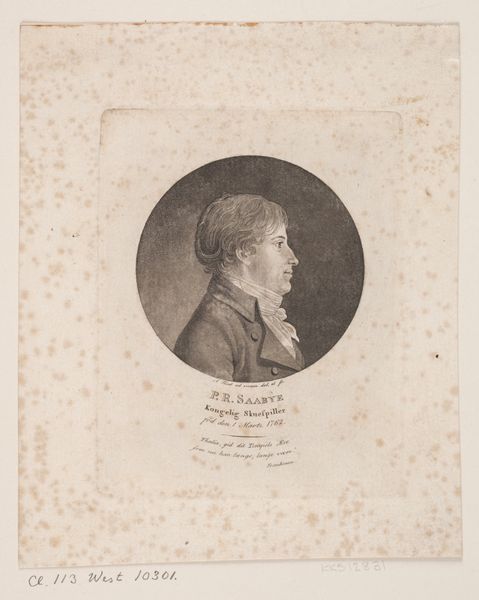
Dimensions: sheet: 4 1/2 x 3 9/16 in. (11.5 x 9 cm) plate: 3 13/16 x 3 1/16 in. (9.7 x 7.8 cm)
Copyright: Public Domain
Curator: Here we have "Physionotrace," an engraving by Edme Quenedey, dating roughly from 1608 to 1660. Editor: The first thing I notice is the almost austere precision of the lines. It gives the image a sense of restraint, but also incredible clarity. Curator: The technique is part of a fascinating history. The physionotrace was actually a mechanical process designed to create accurate profile portraits. Think of it as an early form of photographic likeness, catering to a rising bourgeois class keen on representation. Editor: It’s interesting you mention photography. There’s something undeniably photographic about the level of detail captured, even though it's an engraving. The subtle gradations of light and shadow really define the form. Curator: Precisely. This echoes the Enlightenment's emphasis on reason and observation, influencing social mobility and self-perception. Portraiture was no longer exclusive to the aristocracy. It’s a direct reflection of shifting social structures. Editor: I also can't help but notice the sitter's direct gaze, even in profile, as well as the composition that leads my eyes across the curve of his face. Curator: Contextually, the direct gaze of this ordinary bourgeois subject marks a significant departure from idealized depictions. What we see is an assertive individuality—a new self-awareness born from revolutionary ideas. Editor: Ultimately, it’s this interplay of the visual and the historical that I find captivating. Quenedey delivers clarity of form that transcends its origins. Curator: I concur, that combination makes this a key to understand social identity during immense transformation. It allows us to reimagine the narratives of those once unseen in the grand tapestry of history.
Comments
No comments
Be the first to comment and join the conversation on the ultimate creative platform.
